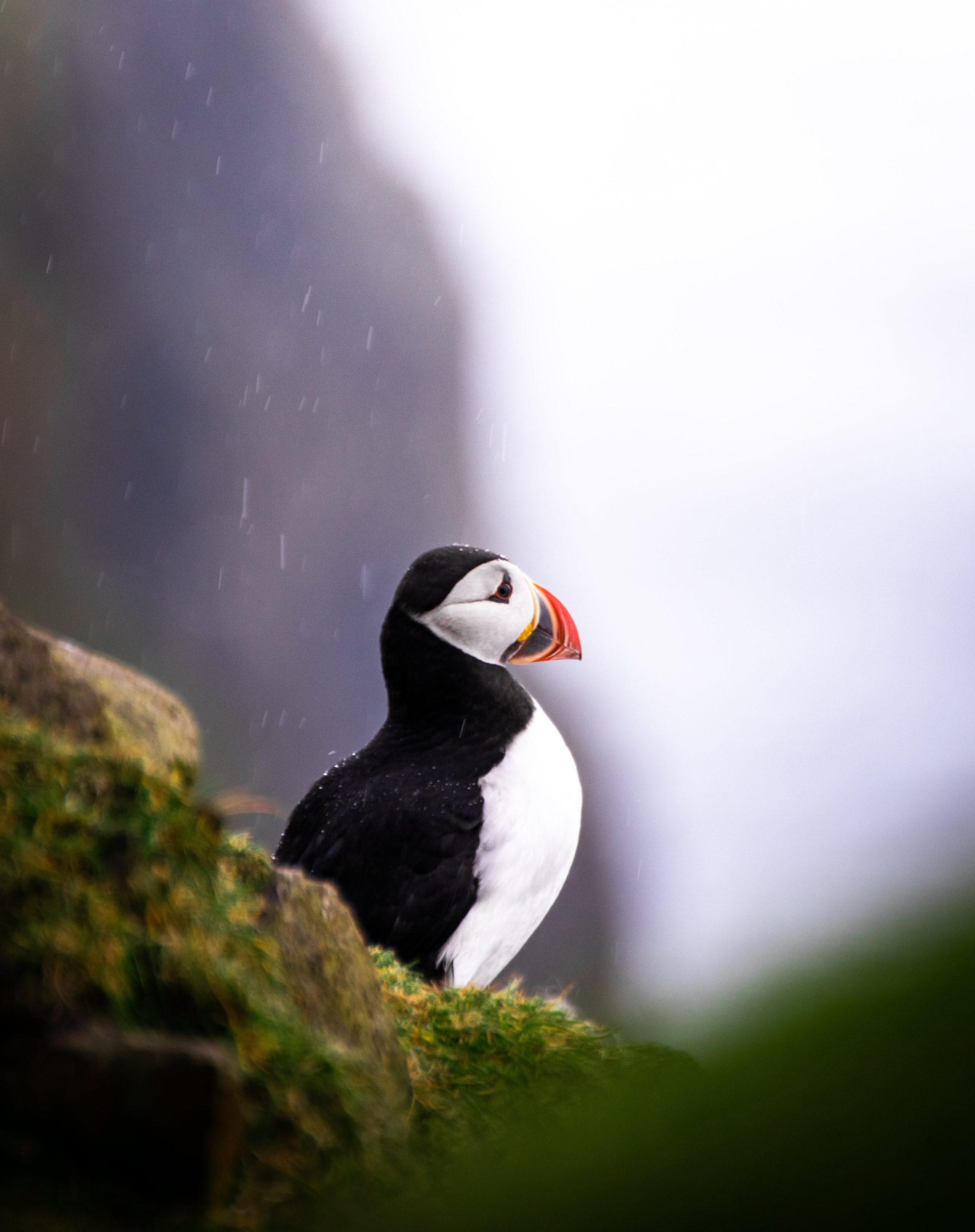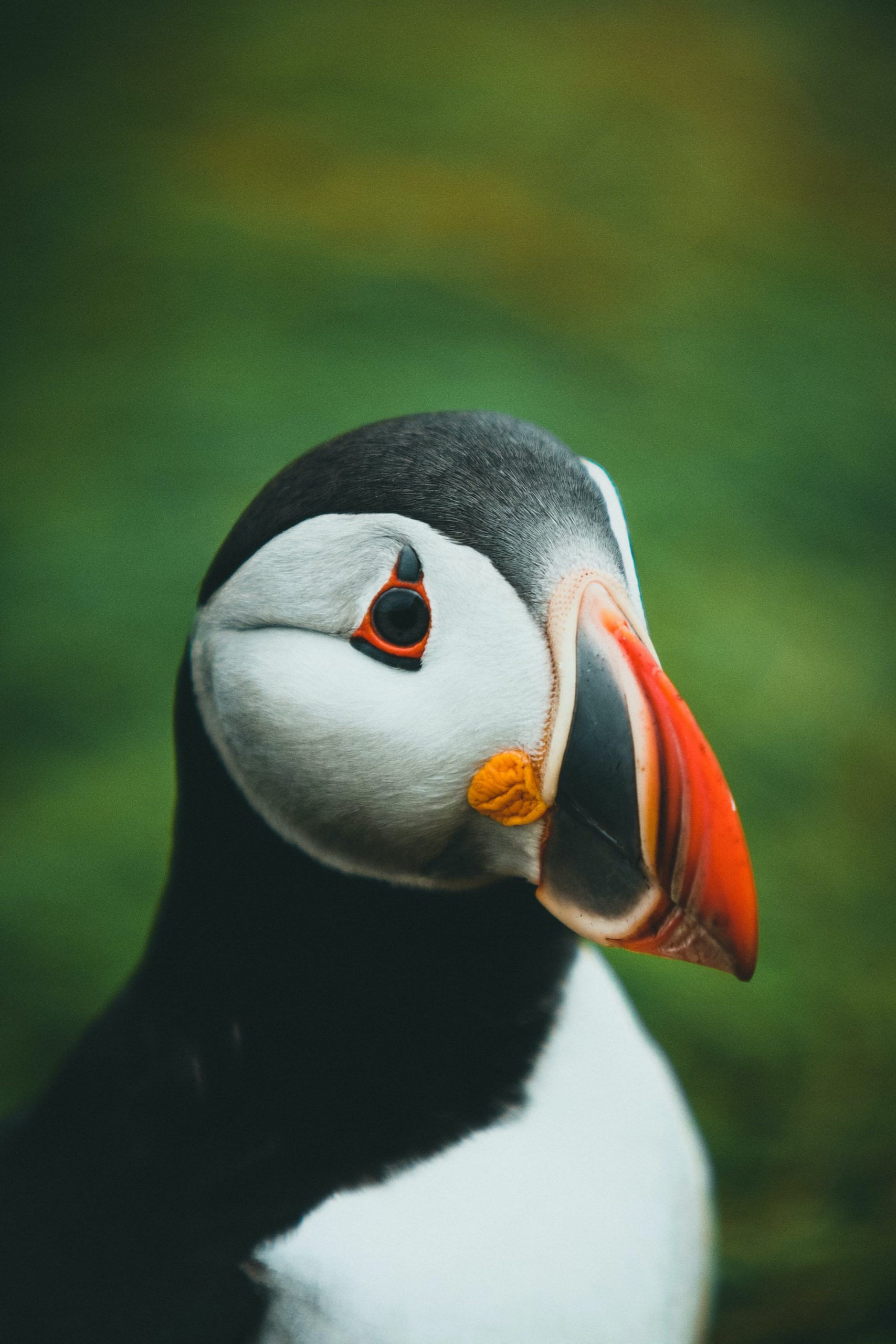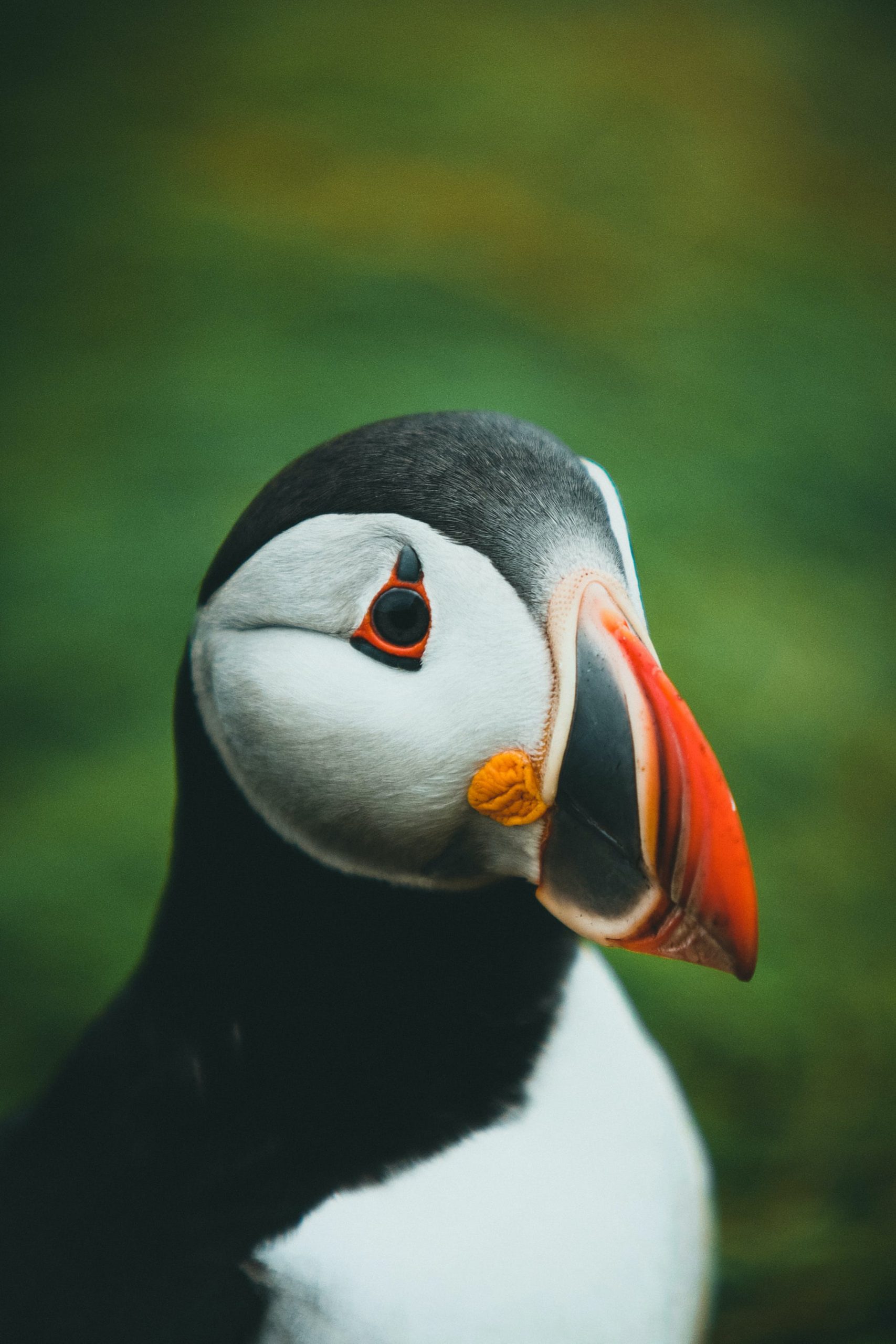Attention all coastal bird lovers! If you’re looking to entice puffins and provide them with a delicious and nutritious meal, look no further. In this article, we will explore the top three seafood options that will have these beautiful birds flocking to your coastal location. From fresh fish to succulent shrimp, we’ll uncover the secret to attracting and satisfying these unique feathered friends. So grab your binoculars and get ready for a feast fit for puffins!

Understanding Puffins and Their Dietary Preferences
Basic characteristics of Puffins
Puffins, also known as the “clowns of the sea,” are charming and distinctive seabirds that are loved by many bird enthusiasts. These medium-sized birds belong to the family Alcidae and are easily recognizable by their colorful beaks, striking plumage, and their ability to dive deep into the water. Puffins have stout bodies, short wings, and webbed feet, making them well-adapted for both flying and swimming.
Dietary Habits of Puffins
Puffins primarily feed on fish and marine invertebrates, which they catch by diving underwater. Their diet mainly consists of small fish like sand eels, herring, and capelin. Additionally, puffins also consume marine invertebrates such as crustaceans and squid. These seabirds are specialized hunters and have unique adaptations that allow them to efficiently catch their prey.
How Puffins hunt
Puffins are skilled divers, capable of reaching depths of up to 200 feet in search of their preferred food sources. They use their wings to “fly” underwater, propelled by their strong flapping motion. Their excellent underwater vision and the ability to hold their breath for several minutes allow them to locate and capture their prey with precision. Once they catch their prey, they use spines on their tongues to hold onto the fish while they return to the surface.
Benefits of Attracting Puffins to Your Coastline
Importance of Puffins to the Ecosystem
Attracting puffins to your coastline can have numerous benefits, not just for bird enthusiasts but also for the ecosystem as a whole. Puffins play a crucial role in maintaining the balance of marine ecosystems by regulating fish populations. They help control the population of small fish, which can, in turn, have cascading effects on the entire food web. By attracting puffins, you contribute to preserving the health and diversity of your local marine environment.
How Puffins Add Beauty to Scenery
Puffins are undoubtedly breathtaking to behold. Their vibrant beaks and distinct black and white plumage make them eye-catching additions to any landscape. The sight of a colony of puffins perched gracefully on cliffs or gliding above the water is a stunning spectacle that can enhance the natural beauty of your coastline. The unique appearance of puffins adds a touch of charm and wonder to any scenery.
The Role of Puffins in Bird Watching and Tourism
Puffins have become popular attractions for birdwatchers and nature enthusiasts worldwide. Their captivating behaviors, such as group flights, courtship displays, and nest-building activities, make them a delight to observe. By attracting puffins to your coastline, you can contribute to the growth of birdwatching and ecotourism in your area. Birdwatchers and tourists will flock to your shoreline to catch a glimpse of these charismatic seabirds, boosting local businesses and promoting conservation efforts.

Setting Up Your Coastline to Attract Puffins
Identifying Puffin-friendly Locations
To attract puffins to your coastline, it is essential to identify suitable locations where these seabirds are known to favor. Puffins typically nest in burrows on rocky cliffs, islands, or slopes. Look for areas with suitable nesting sites, vegetation for nesting material, and proximity to their preferred food sources. Researching the migratory patterns and nesting habits of puffins in your region can help you determine the best spots to attract these charming birds.
Ensuring a Safe Environment for Puffins
Creating a safe environment for puffins is of utmost importance. Avoid introducing any potential threats to their nesting sites, such as predators like rats or invasive plant species. Minimize disturbances near nesting areas, as puffins are sensitive to human presence and noise. Educate visitors and locals about the importance of conserving puffin habitats and the potential dangers associated with disturbing these sensitive birds.
Creating a Suitable Habitat for Puffins
To entice puffins to your coastline, consider enhancing their natural habitat. Provide nesting boxes or artificial burrows that mimic their preferred nesting conditions. These structures should be strategically placed near suitable food sources and away from potential hazards. Additionally, create nesting material stations by placing seaweed or grass near the nesting areas. These efforts can help attract puffins and provide them with the ideal conditions for breeding and raising their young.
Top 3 Seafood Options for Puffins: A Detailed Review
Option 1: Sand Eels
Sand eels are a staple food source for puffins and are highly nutritious. These small fish are rich in protein and essential fatty acids, which are vital for the puffins’ growth, energy, and overall health. Sand eels are especially abundant in coastal areas, making them an easily accessible and sustainable food option for puffins. By providing sand eels, you can ensure that the puffins visiting your coastline have a reliable and nutritious food source.
Option 2: Small Fish like Herring and Capelin
Puffins have a diverse diet and readily consume small fish like herring and capelin. These fish species are abundant in many marine environments and are an excellent source of nutrients for puffins. When selecting small fish as a food option for puffins, ensure that they are sourced sustainably to minimize the impact on other marine species. Offering a variety of small fish can attract a wider range of puffins to your coastline.
Option 3: Marine Invertebrates
In addition to fish, puffins also consume marine invertebrates like crustaceans and squid. To cater to their dietary preferences, consider providing these types of seafood for the puffins visiting your coastline. Crustaceans, such as shrimp and krill, are particularly favored by puffins and can be easily sourced or purchased to supplement their diet. Offering a diverse selection of marine invertebrates ensures that the puffins have a varied and balanced diet.

Preparing Seafood for Puffins
Procuring Raw Seafood
When preparing seafood for puffins, it is important to ensure that the food is fresh and of high quality. If possible, source the seafood from reputable suppliers or local fishermen who practice sustainable fishing methods. Fresh fish or marine invertebrates should be obtained to provide the puffins with the necessary nutrients.
Preparing the Seafood
To prepare the seafood for puffins, ensure that it is cleaned and properly cut into small, bite-sized pieces. Remove any bones or other potential hazards that could pose a risk to the puffins’ health. Depending on the type of seafood, you may need to cook or freeze it before offering it to the birds. Follow proper food handling and storage guidelines to maintain the freshness and hygiene of the seafood.
Setting it Out for Puffins
Place the prepared seafood in suitable feeding areas that are easily accessible to the puffins. Consider using shallow dishes, trays, or feeding platforms to present the food. Keep in mind that puffins are comfortable feeding in water, so providing small pans of water alongside the seafood can enhance their feeding experience. Monitor the feeding areas regularly and replenish the seafood as needed to ensure that the puffins have a continuous food supply.
Using Bird Feeders for Seafood
Types of Bird Feeders Suitable for Seafood
Bird feeders can be adapted to provide seafood for puffins. Look for feeders with shallow edges or platforms where you can place the prepared seafood. Feeder designs that allow easy access and prevent the food from getting wet or spoiled are ideal. Consider using bird feeders specifically designed for seabirds or adjustable feeders that can accommodate different sizes of seafood.
Maintaining Cleanliness in Bird Feeders
To ensure the health of the puffins, it is essential to keep the bird feeders clean and free from contaminants. Regularly clean the feeders with mild soap and hot water, rinsing them thoroughly to remove any lingering residue. This practice helps prevent the growth of bacteria or parasites that could harm the puffins. Replace the seafood with fresh portions to avoid spoilage and to maintain the attractiveness of the feeding area.
Ensuring Accessibility and Visibility for Puffins
Place the bird feeders in locations that are easily visible and accessible to the puffins. Consider positioning them near the shoreline or nesting areas, increasing the chances of attracting puffins. Avoid placing the feeders too close to potential hazards or disturbances. Monitor the bird feeders regularly and adjust their positioning if necessary to optimize visibility and accessibility for the puffins.
Major Bird Feeder Brands for Seafood
Kaytee and Perky-Pet
Kaytee and Perky-Pet are well-known brands that specialize in a wide range of bird feeders, bird seed, and bird accessories. While their product lines may not specifically cater to seabirds, their feeders can be adapted to provide seafood for puffins. Look for versatile designs that suit the needs of the puffins and ensure the safety and hygiene of the food.
Droll Yankees and Wagner’s
Droll Yankees and Wagner’s are reputable brands that offer high-quality bird feeders, especially for songbirds. While their feeders may not be designed explicitly for seabirds, they can be modified or repurposed to accommodate seafood for puffins. Consider selecting feeders that are easy to clean and have adjustable features to cater to the puffins’ feeding preferences.
Brome Bird Care and Wild Delight
Brome Bird Care and Wild Delight are renowned brands that provide premium bird food and bird care products. Though their product lines focus more on traditional bird feed, their feeders can still be used creatively to offer seafood options for puffins. Look for feeders with suitable tray attachments or adaptations that can accommodate the prepared seafood.
Additional Tips to Attract Puffins
Using Live Baits
To increase your chances of attracting puffins, consider using live baits in addition to prepared seafood. Live baits can mimic the natural movement of fish, making them more enticing for puffins. Live sand eels or small fish can be placed in strategically positioned mesh cages or nets near the feeding areas to attract puffins with their movements.
Optimal Timing to Attract Puffins
Puffins are migratory birds, and their presence along the coastline may vary depending on the time of the year. Research the migratory patterns of puffins in your region and time your efforts accordingly. Identify peak migration seasons or nesting periods when puffins are more likely to visit your coastline. By aligning your attractions with the optimal timing, you can increase the chances of attracting these delightful seabirds.
Mimicking Puffin Calls
Puffins communicate with each other using various vocalizations. Mimicking their calls can help create a familiar and inviting environment for them. Play recordings of puffin calls near the feeding areas or nesting sites to attract their attention and make them feel more at ease. Combined with the presence of suitable food sources, this strategy can make your coastline even more appealing to puffins.
Dealing with Potential Challenges
Preventing Predatory Threats
Predatory threats can pose risks to puffins and deter them from visiting your coastline. Take measures to minimize these threats by employing methods to deter predators such as rats, cats, or larger birds. Utilize physical barriers like fences or nets to protect nesting areas from potential predators. Regularly monitor the nesting sites and take appropriate action if you notice any signs of predation or disturbance.
Safeguarding Against Human Disturbances
Human disturbances can significantly impact the behavior and breeding success of puffins. Educate visitors and locals about the importance of maintaining a respectful distance and minimizing noise near the nesting areas. Establish clear signage and guidelines to inform people about the sensitivity of puffins to human presence. By creating awareness and promoting responsible behavior, you can help safeguard the puffins’ breeding and feeding grounds.
Managing Weather-related Challenges
Weather conditions can affect the presence and behavior of puffins. Strong winds, heavy rain, or harsh temperatures may discourage puffins from visiting or remaining in your coastal area. Provide suitable shelters or coverings near the feeding areas to protect the puffins from extreme weather conditions. Ensure that the shelters are adequately positioned and securely anchored to provide effective protection without causing any harm to the birds.
Monitoring Puffin Appearance and Behavior
Observing Puffin Feeding Habits
Monitoring the feeding habits of puffins can provide valuable insights into their preferences and overall health. Regularly observe their behavior at the feeding areas and document the types of seafood they consume and the feeding patterns they exhibit. By understanding their preferred food sources and feeding behaviors, you can adapt your offerings to better cater to the needs of the puffins visiting your coastline.
Noticing Changes in Puffin Numbers
Keep track of the puffin population in your coastal area by monitoring their numbers over time. Document any significant increases or decreases in the puffin presence and correlate them with potential factors such as food availability, weather, or disturbances. This data can help assess the effectiveness of your efforts in attracting and supporting puffins, as well as identify any potential issues or challenges.
Recording Unique Puffin Behaviors
Puffins exhibit various fascinating behaviors that are worth documenting. Observe and record any unique behaviors you notice, such as courtship rituals, nesting activities, or interactions with other bird species. These observations contribute to the knowledge and understanding of puffin behavior and can be shared with bird enthusiasts and researchers, further promoting the conservation and appreciation of these remarkable seabirds.
In conclusion, understanding the dietary preferences of puffins and taking the necessary steps to attract them to your coastline can have numerous benefits. Not only do these charming seabirds add beauty to the scenery and enhance birdwatching and tourism opportunities, but they also play a vital role in maintaining the balance of marine ecosystems. By creating a suitable habitat, providing the right seafood options, and implementing proper monitoring and management strategies, you can successfully attract and support puffins, ensuring the well-being of these beloved birds for generations to come.
